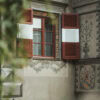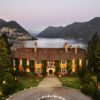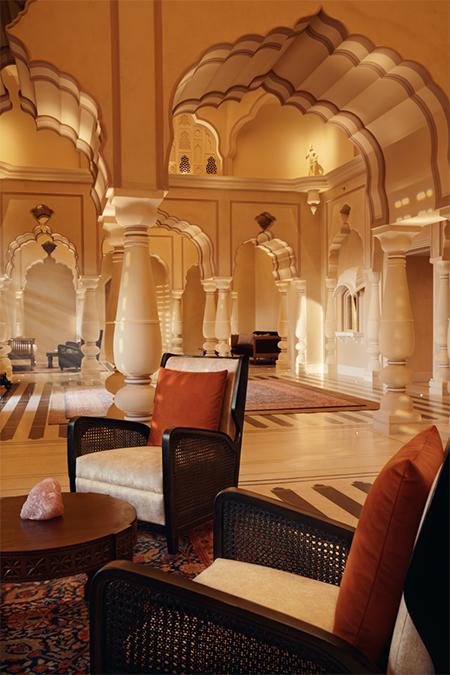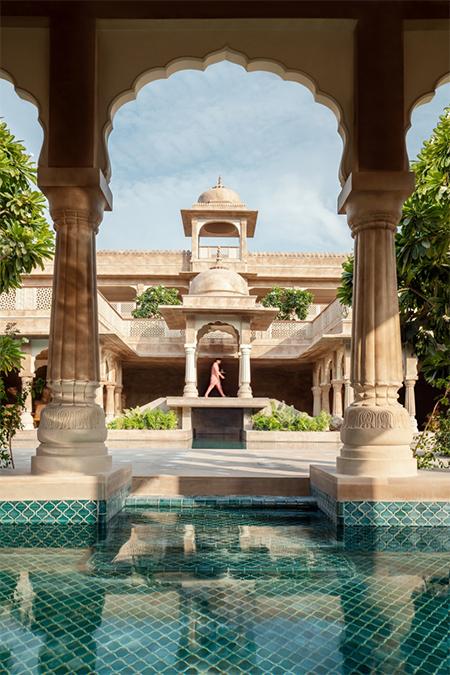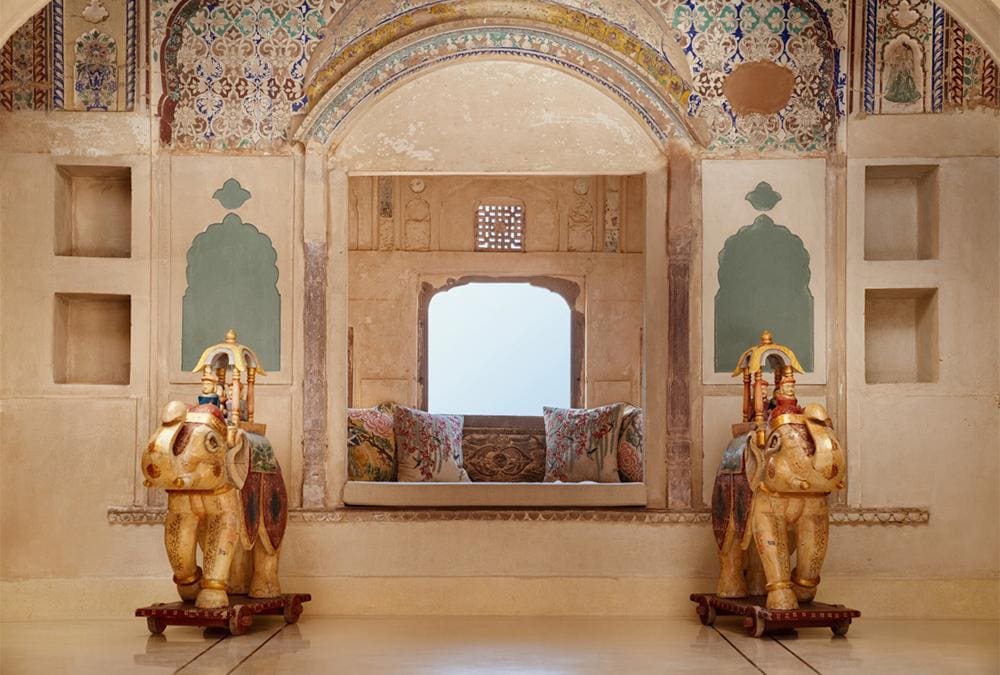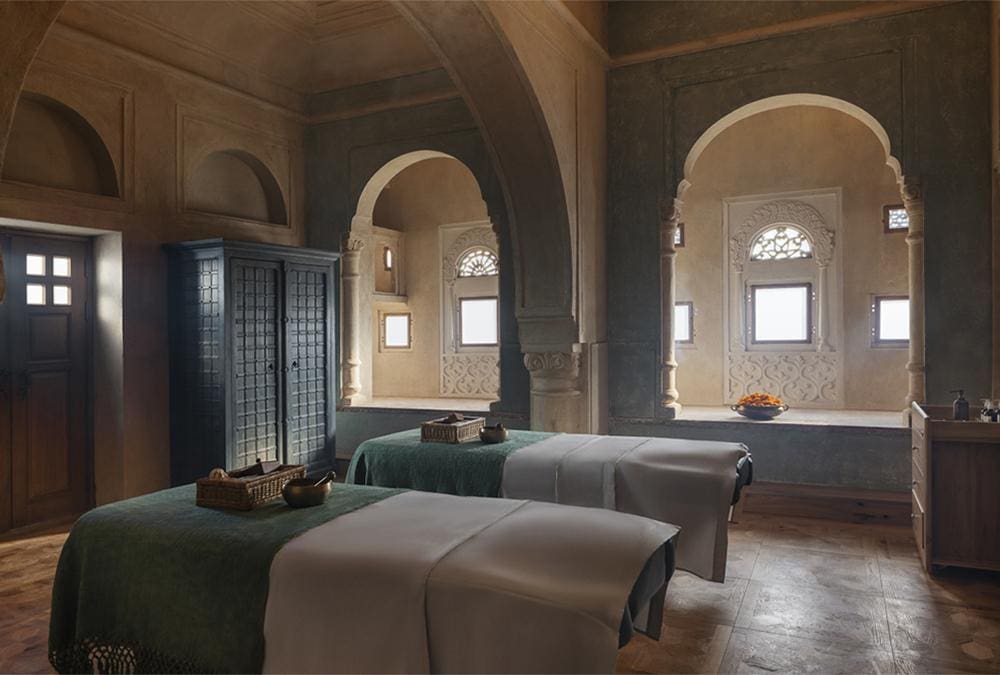The Six Senses Group has transformed the historic Fort Barwara in Rajasthan, India, into a dream hotel. Carefully restored in the spirit of sustainability, the 14th-century architectural jewel now offers modern luxury – and an ambience that is second to none.
If walls could talk, they would have a lot to tell: The magnificent Fort Barwara in Rajasthan dates back to the 14th century and was originally owned by a royal family. Now the Six Senses Group, known for its extraordinary houses, has turned it into a fascinating oasis of relaxation. Carefully restored and converted with a focus on sustainability, the dream hotel in the Indian palace invites guests on a fairytale journey back in time to the country’s history and culture.
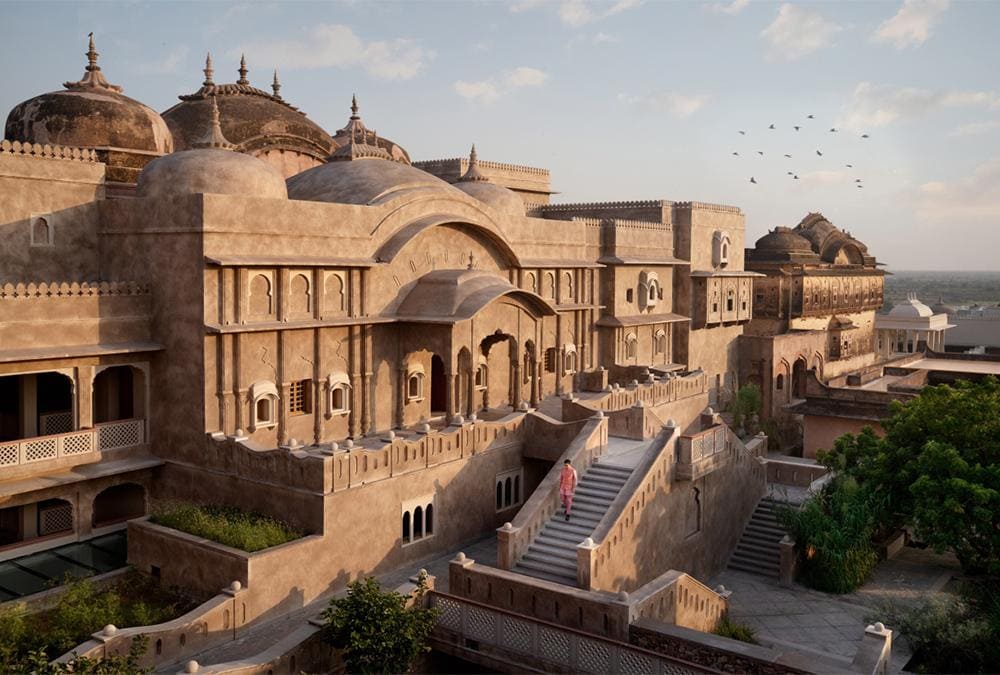
Mardana Mahal: One of the two palaces of the fortress turned hotel. 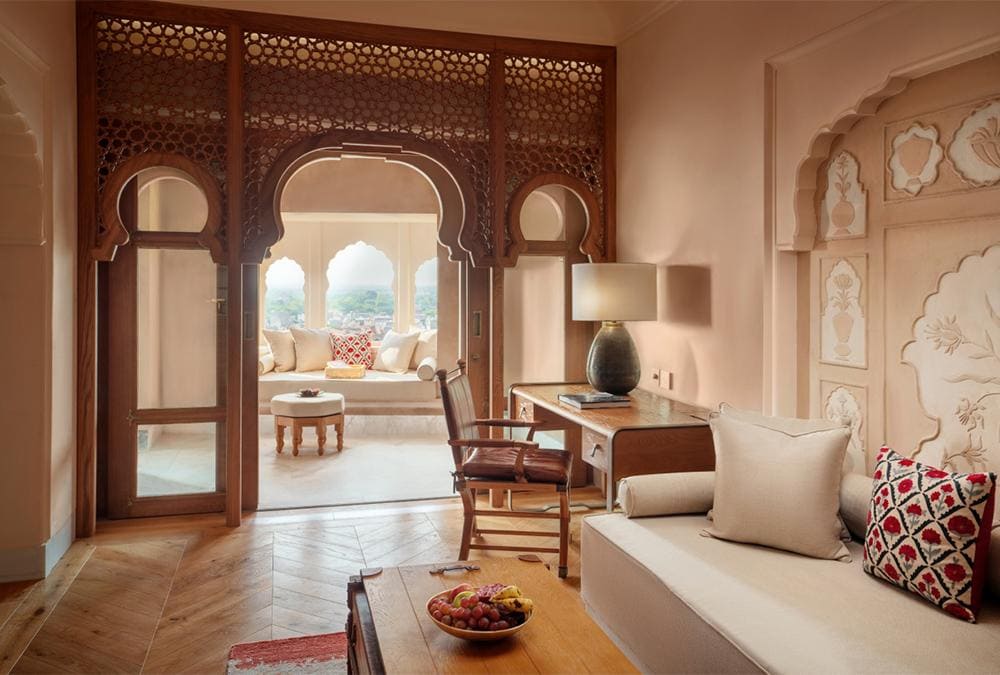
The elegant living room of a “Fort Suite” at Six Senses Resort Fort Barwara.
The new Six Senses Resort Fort Barwara is perched some 110 kilometers southeast of Jaipur in the outskirts of the village of Chauth ka Barwara. It opens up a magnificent view of a lake and of the Chauth ka Barwara Mandir temple opposite. The extensive restoration work included two palace buildings and two temples within the walled fortress.
Preserved yesterday, better tomorrow
In addition, the surrounding landscape was incorporated into the sustainable regeneration: The landscaping relies exclusively on native plants and water features. And the property is working with the local community to renaturalise the forests to the east and restore the “sacred lake” to its former glory.
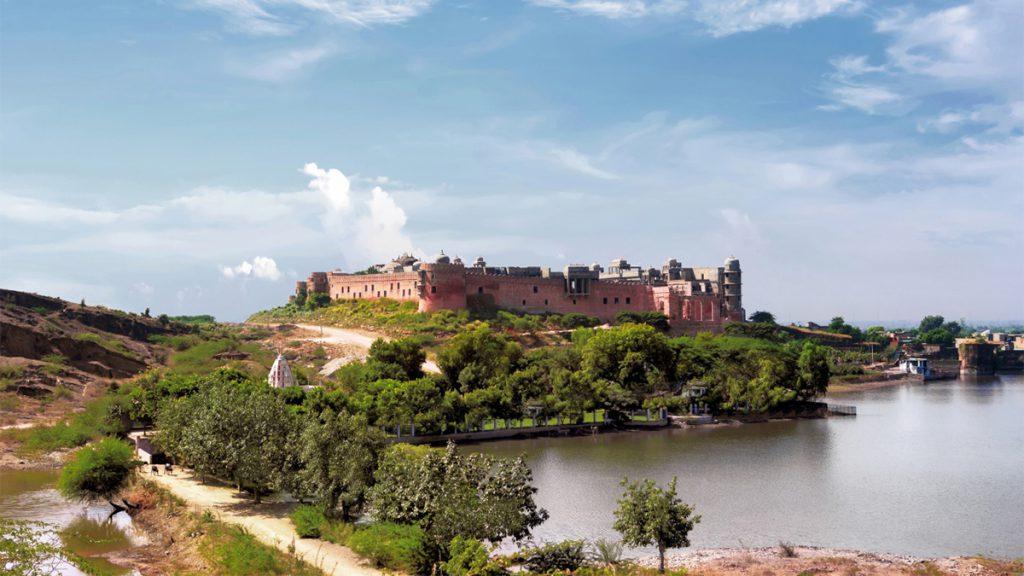
The 48 suites of the Fort Bawara make the graceful royal ambience of an era 700 years ago tangible and tangible. Between 70 and 280 square meters in size, they shine with enchanting interiors. Just like the entire luxury resort, for whose interior design renowned specialists are responsible. Amit Gehlot of ASA Designs from Jaipur designed all the rooms and private spaces. And Mitchell Hailey of Mitchell & Eades took over the furnishing of the public zones.
Royal logieren, Rajasthan-Style
The east wing of the dream hotel overlooks the countryside, the west wing the village of Barwara and its surrounding countryside. Each accommodation is designed in contemporary Rajasthani style. A clever combination of modern technology and local craftsmanship ensures comfort and authenticity. Right down to handmade mattresses, cotton bed linen and details that pay tribute to Rajasthani tradition.
The restoration and reconstruction work was carried out under the supervision of architect Parul Zaveri from the Panika office, which specializes in monument preservation, and her colleague Nimish Patel. An important point was to use exactly the same materials and techniques that were used in the original building. Team member Nitin Mehta: “The walls of most of the historic buildings are either brick or stone masonry using lime surkhi mortar. All were plastered with at least two layers of lime plaster.”
Marble Shine for Fort Barwara
The decorative elements, on the other hand, were executed in traditional Ghutai plaster. This is the resistant, slightly shimmering material that makes many Indian palaces look as if they were made of marble.
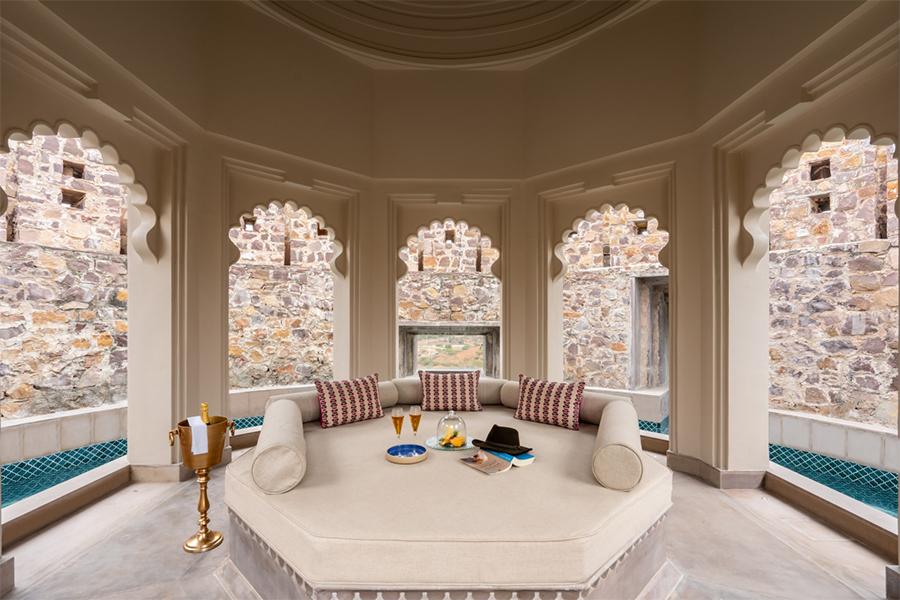
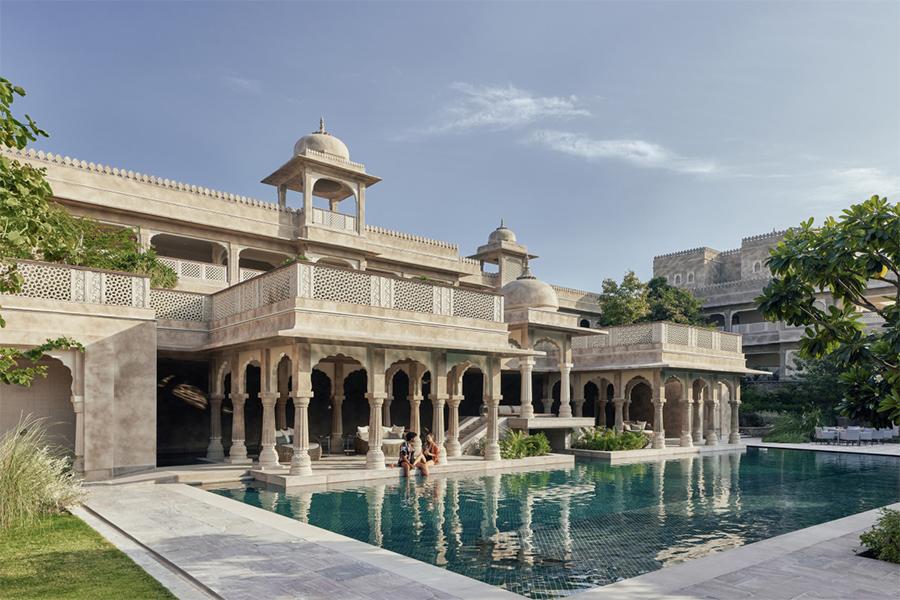
Following the classic Rajasthani architecture, as many courtyards, richly decorated Jharokha stone windows, niches and similar vernacular elements as possible were integrated into the design. And for the openings in the ramparts, a special technique was developed to combine traditional and modern approaches.
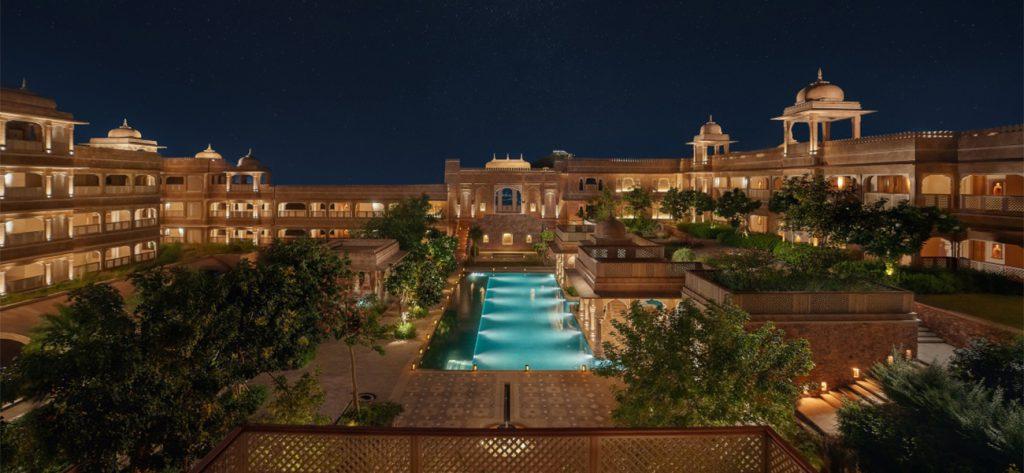
Because the design of the Six Senses Fort Barwara focused on sustainability as well as social responsibility, the team preferred to employ workers from the region. The necessary materials also come mainly from the local area, which is clearly visible in the floor patterns, cornices and other authentic details of the dream hotel.
Sustainability at Fort Barwara
The design concept ensures that sufficient daylight enters the interior of Fort Barwara, but direct sunlight is avoided as much as possible to maintain cooling and reduce power consumption.
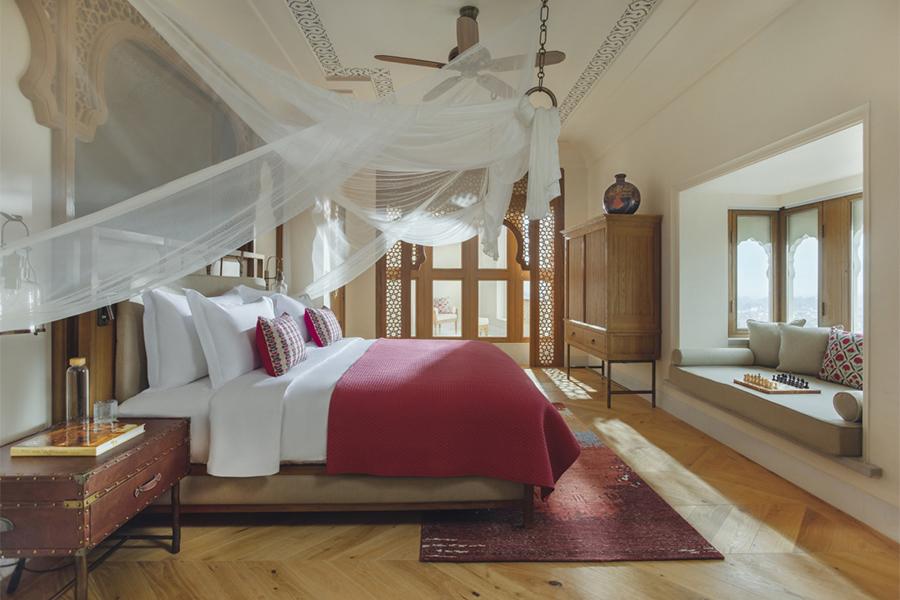
Bright rooms and private terraces … 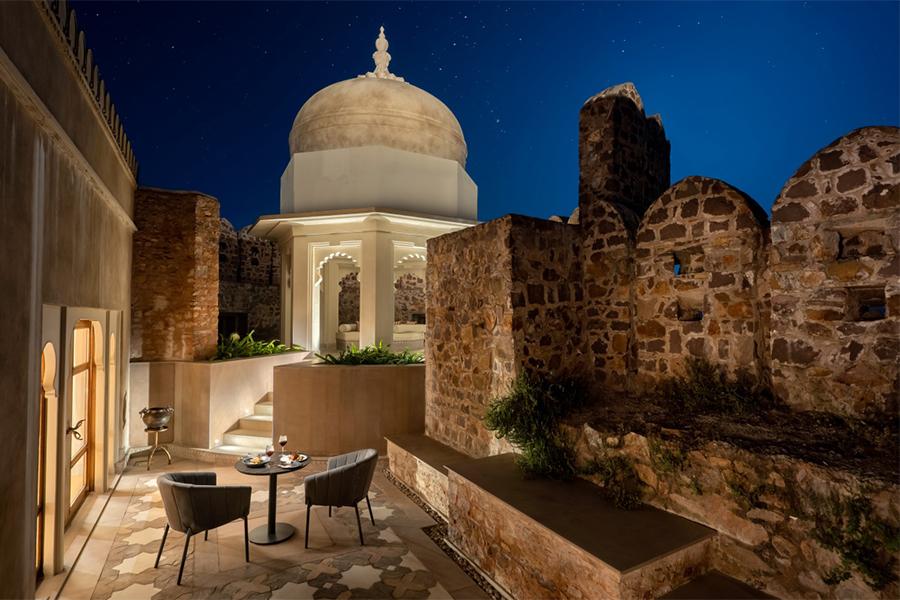
… ensure top comfort in the Suite Hotel.
In those areas of the hotel that remain hidden from the eyes of the guests, solar panels contribute to the energy supply. A water collection system and garden maintenance with recycled water also serve to conserve resources and protect the environment.
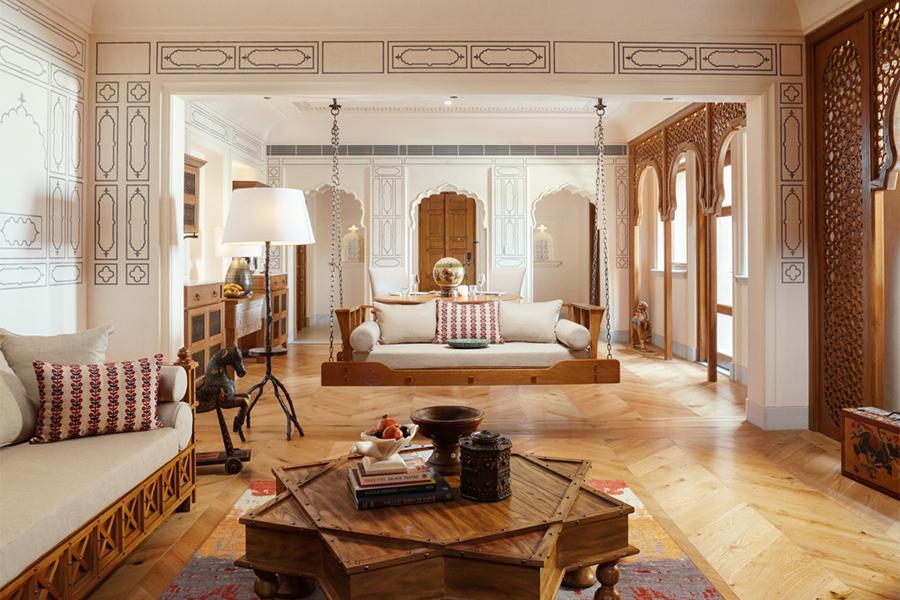
Six Senses, which is part of the InterContinental Hotels Group, is also committed to sustainability, as evidenced by its “Shaharut” resort in the Negev desert and its new property in Ibiza. At Six Senses Fort Barwara, it is once again emphasized: “Together with our hosts, we are determined to improve the ecological footprint and the carbon footprint of our activities in connection with the resort and spa operations.
More green, less plastic
According to the website, this is already happening with success: 80 seedlings have been planted as part of the re-vegetation project. The waste reduction rate of the dream hotel, which will open in 2021, is 77 percent.
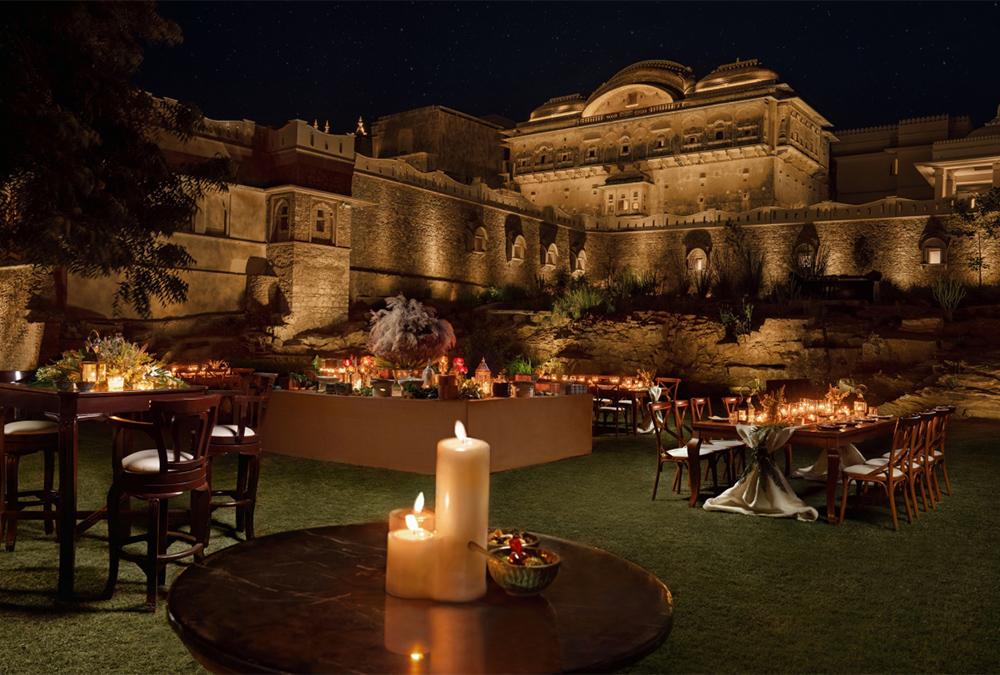
By bottling their own drinking water at Fort Barwara, the environment is spared countless plastic bottles. The restaurants cook with local produce from their own organic garden and from nearby farms. And Six Senses maintains a partnership with the Barwara Trustees, among others, to ensure that joint programmes support the villagers.
Wellness luxury
For the well-being of its guests, the dream hotel in the Indian palace offers everything that unconventionally luxurious relaxation needs. This includes the beautiful spa in the Zanana Mahal (the “Women’s Palace”), which offers an innovative wellness mix of principles of Eastern and Western medicine. Pools, sauna, steam bath, yoga pavilion and a state-of-the-art fitness centre go without saying. As well as expert care, a private herb garden and treatments in exquisite rooms.
When it comes to romance and the magic of ancient India, the Six Senses Fort Barwara is hard to beat overall. Even when it comes to culinary delights. The speciality restaurant “Cortile”, for example, is located in a leafy courtyard and offers private dining areas in the fort’s former observation tower.
Indulgence Oasis Six Senses Fort Barwara
At the Roohani, on the other hand, where guest chefs perform their art, guests can look out over the historic domes of the fort. No less enchanting: casual indulgence from the open kitchen of the Rani Bagh or the Rajawat Room in the Mardana Mahal (the “men’s palace”) with its creative creations and fine spirits.
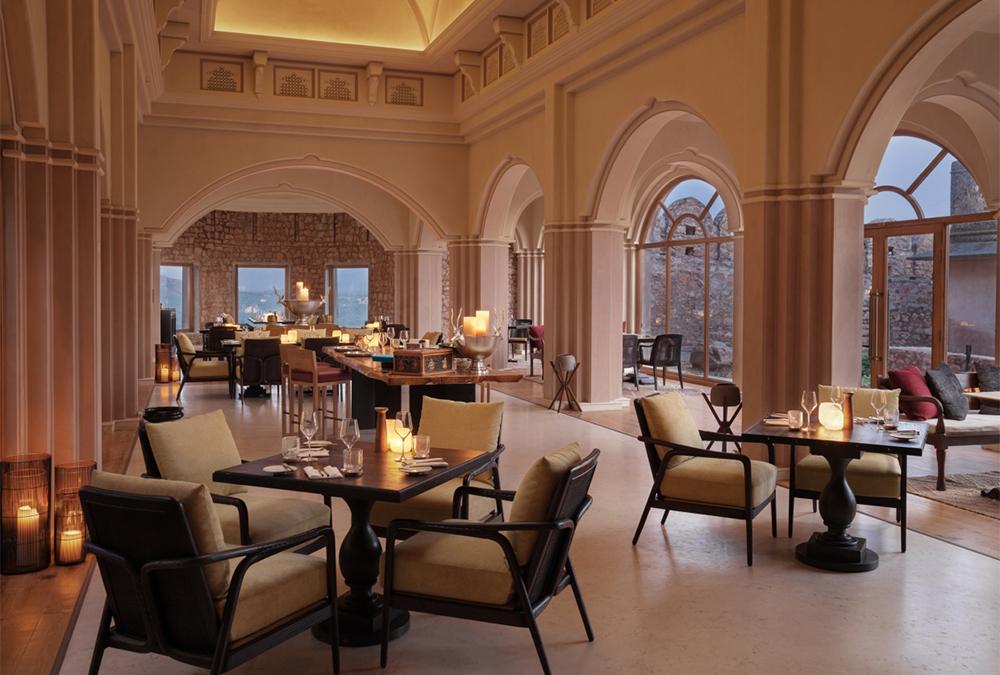
All this and more is within a two-and-a-half hour drive from Jaipur airport. In a place that breathes history. In a jewel of a building from the 14th century, which has been transformed from a fortress into a noble residence and now – after a successful redesign – into an elegant dream hotel. And thus a top destination for wealthy India fans who love fairytale romance.
Text: Elisabeth Schneyder
Pictures: Six Senses Hotels Resorts Spas


